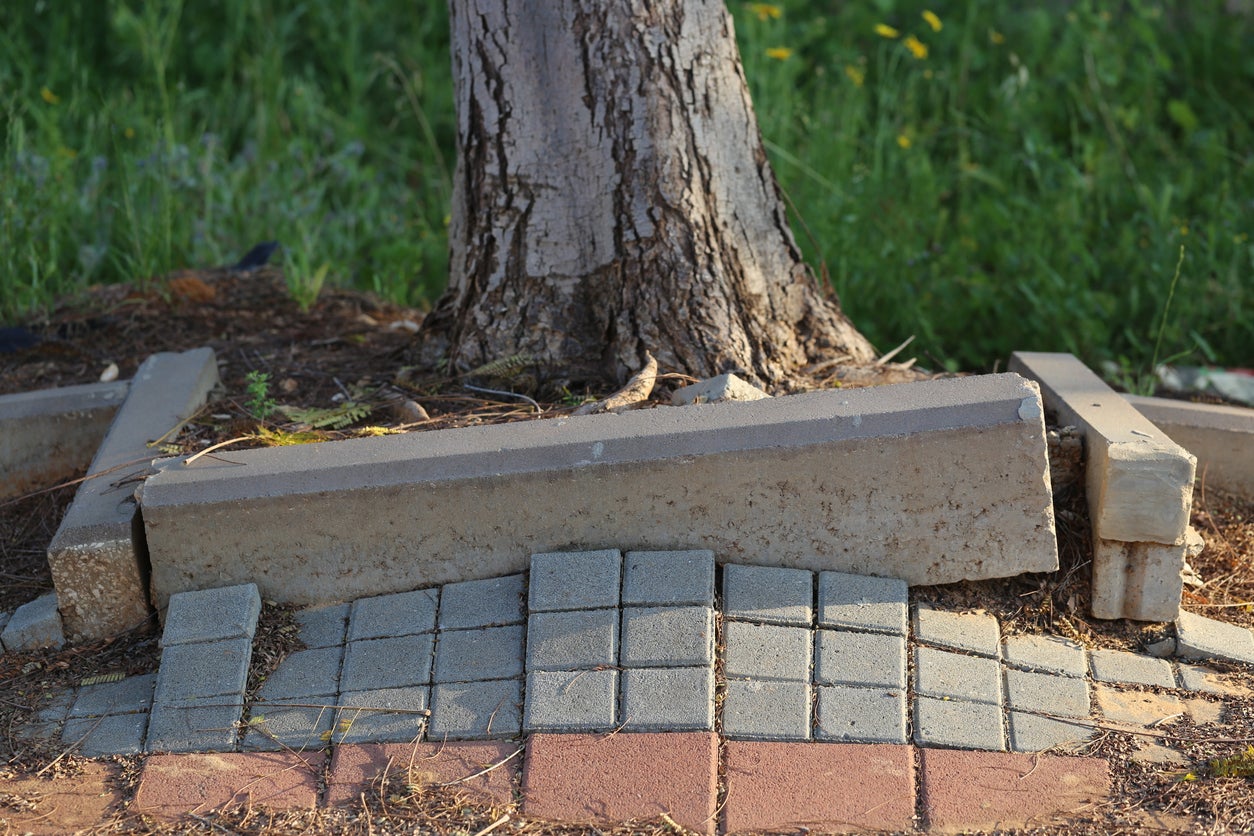Invasive Tree Root List: Trees That Have Invasive Root Systems


Did you know that the average tree has as much mass below ground as it has above ground? Most of the mass of a tree's root system is in the top 18-24 inches (45.5-61 cm.) of soil. The roots spread at least as far as the most distant tips of the branches, and invasive tree roots often spread much farther. Invasive tree roots can be very destructive. Let's learn more about common trees that have invasive root systems and planting precautions for invasive trees.
Problems with Invasive Tree Roots
Trees that have invasive root systems invade pipes because they contain the three essential elements to sustain life: air, moisture, and nutrients. Several factors can cause a pipe to develop a crack or small leak. The most common is the natural shifting and movement of soil as it shrinks during droughts and swells when rehydrated. Once a pipe develops a leak, the roots seek out the source and grow into the pipe. Roots that damage the pavement are also seeking moisture. Water becomes trapped in areas beneath sidewalks, paved areas, and foundations because it can't evaporate. Trees with shallow root systems can create enough pressure to crack or raise the pavement.
Common Trees with Invasive Roots
This invasive tree root list includes some of the worst offenders:
- Hybrid Poplars (Populus sp.) - Hybrid poplar trees are bred for fast growth. They are valuable as a quick source of pulpwood, energy, and lumber, but they don't make good landscape trees. They have shallow, invasive roots and seldom live more than 15 years in the landscape.
- Willows (Salix sp.) - The worst members of the willow tree family include the weeping, corkscrew, and Austree willows. These moisture-loving trees have very aggressive roots that invade sewer and septic lines and irrigation ditches. They also have shallow roots that lift sidewalks, foundations, and other paved surfaces and make lawn maintenance difficult.
- American Elm (Ulmus americana) - The moisture-loving roots of American elms often invade sewer lines and drain pipes.
- Silver Maple (Acer saccharinum) - Silver maples have shallow roots that become exposed above the surface of the soil. Keep them well away from foundations, driveways, and sidewalks. You should also be aware that it is very difficult to grow any plants, including grass, under a silver maple.
Planting Precautions for Invasive Trees
Before you plant a tree, find out about the nature of its root system. You should never plant a tree closer than 10 feet (3 m.) from the foundation of a home, and trees with invasive roots may need a distance of 25 to 50 feet (7.5 to 15 m.) of space. Slow-growing trees generally have less destructive roots than those that grow quickly. Keep trees with spreading, water-hungry roots 20 to 30 feet (6 to 9 m.) from water and sewer lines. Plant trees at least 10 feet (3 m.) from driveways, sidewalks, and patios. If the tree is known to have spreading surface roots, allow at least 20 feet (6 m.).
Gardening tips, videos, info and more delivered right to your inbox!
Sign up for the Gardening Know How newsletter today and receive a free copy of our e-book "How to Grow Delicious Tomatoes".

Jackie Carroll has written over 500 articles for Gardening Know How on a wide range of topics.
-
 Try The Trend – Turn Any Bed Into A Keyhole Garden With This Clever In-Ground Composter
Try The Trend – Turn Any Bed Into A Keyhole Garden With This Clever In-Ground ComposterKeyhole gardening is an efficient and sustainable practice that saves space. Get started on this DIY project quickly and easily with an in-ground composter.
By Bonnie L. Grant
-
 4 Superfast Composting Methods: Turn Waste Into Garden Gold In 30 Days Or Less
4 Superfast Composting Methods: Turn Waste Into Garden Gold In 30 Days Or LessTry the fastest composting methods to turbocharge your pile and transform kitchen scraps and garden waste into finished compost in just a few weeks.
By Mary Ellen Ellis
-
 Best Trees For Carbon Sequestration And Climate Change
Best Trees For Carbon Sequestration And Climate ChangeLet’s keep planting trees. They are our best bet for capturing carbon and may help with our global warming issues.
By Teo Spengler
-
 7 Invasive Trees You Should Never Plant In Your Yard Or Garden
7 Invasive Trees You Should Never Plant In Your Yard Or GardenWhat are some invasive trees you should never plant in your yard? Click here to find out.
By Teo Spengler
-
 How Close Can You Plant A Tree To A Stump?
How Close Can You Plant A Tree To A Stump?Looking to plant new trees near old stumps or where stumps have been removed? Click here to learn how.
By Teo Spengler
-
 Messiest Trees That Drop Debris Everywhere
Messiest Trees That Drop Debris EverywhereWant to know which trees will create the biggest messes in your home landscape? Click here to find out.
By Amy Grant
-
 How To Get Rid Of Tree Sprouts In The Yard From Nearby Trees
How To Get Rid Of Tree Sprouts In The Yard From Nearby TreesLearn the simple way to keep pesky tree seedlings in your lawn from becoming saplings.
By Teo Spengler
-
 How To Tell How Old A Tree Is
How To Tell How Old A Tree IsEver wondered how to calculate the age of a tree? Click here to learn all about it.
By Teo Spengler
-
 When To Remove Tree Stakes From Saplings
When To Remove Tree Stakes From SaplingsA newly planted tree may grow strong when it’s staked, but don’t forget to remove the stakes when it’s stable.
By Teo Spengler
-
 Inosculation And Trees Growing Together
Inosculation And Trees Growing TogetherIf you ever see two trees that have bonded and grown together, read here to learn why and how it happens.
By Teo Spengler